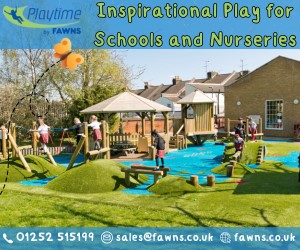1 Sensory garden:
A garden space designed to stimulate the senses, with aromatic plants, surfaces with distinctive textures or objects that make sounds, can offer special experiences, particularly for children with SEN.
2 Mud kitchen:
Younger children can get endless fun and stimulation from playfully combining water and earth.
3 Wildflower area:
Creating an area of wildflowers gives pollinators – notably bees and butterflies – what they need. It’s both a learning opportunity and good for the environment.
4 Orchard:
Planting fruit trees has an obvious reward: edible goodies, which can start being harvested within just a few years, be they pears, apples, plums, or whatever children may favour.
5 Water butts:
Having a good supply of water in your garden is essential, but collecting rainwater is especially beneficial. It’s free, better for the plants, and teaches kids about water conservation.
6 Pond:
A magnet for wildlife, even a small pond will attract creatures – but a bigger pond will encourage even more, from hunting frogs to drinking hedgehogs to hovering dragonflies.
7 Gardening club:
Getting children involved is possibly the most rewarding use of a school garden, as they’ll get their hands dirty and learn about growing things. Plus, they’ll get to enjoy the results of their labours: flowers and food.
8 Compost:
Making your own compost is great for teaching children what goes into it (from food waste to plant cuttings), how long it takes to make, and why it’s such important plant food.
9 Shelter:
Create a shelter that can be used to take the classroom outside and give pupils a place to escape downpours while they continue outdoor learning.
10 Campfire:
With the proper supervision, a campfire can be a marvellous addition to a garden: somewhere to sit and tell stories, toast marshmallows, warm hands, or just stare into the flames.
More information
- School gardens will boost children’s wellbeing and help them understand climate change
- 10 ways to use your garden to raise funds
- Gardening calendar







